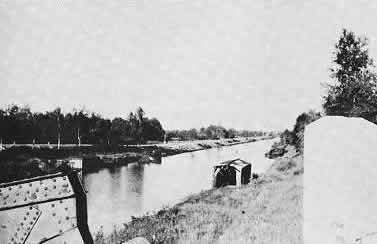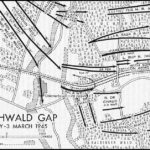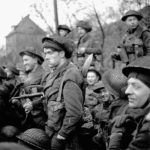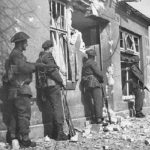The last week of March 1945 found the Lincoln and Welland Regiment on the south side of the Rhine River near Best, Holland. This was a time that the Regiment received new conscripts. There was a training programme set up to bring the new men along. The morale of the regiment was fairly low at this time. Even though many men could see that the end of the war was near, the regiment was still getting too many casualties. Good friends and good men were still losing their lives.
The fighting in these late stages of the war was different. The German Army was now made up a small core of highly-trained soldiers and a larger part of older men and young boys. This made for an unpredictable and desperate foe, especially when the allies drove into Germany itself. This, the Canadian men could feel, and no one wanted to make a mistake this late in the war.
On the 28th of March the regiment learned of OPERATION HAYMAKER, the final thrust into Holland and then into Germany itself. On the 30th of March a regimental convoy pulled out of Best and moved back up through Nijmegen, and Cleve and across the Rhine River unopposed via the Black Frier’s bridge at Rees.
April 1st, Easter Sunday, was spent on a rainy day in open country between Rees and Emmerich. This was where the Regiment learned that the enemy was in full retreat. They were expected to see no opposition until they advanced as far north as the Twente Canal. So the regiment moved up quickly, moving through Ruurlo on the 2nd of April and moving up to take the Twente Canal at dawn on the 4th.
The Lincoln and Welland Regiment was in place on the south side of the Twente Canal by 12:30 PM on the 3rd. As the Commanding Officer, Lt. Col. Coleman, was taking the time to outline the next morning’s attack, orders were given for him to attack as soon as possible. Fierce resistance was met at the canal to the west, and the regiment could avoid this resistance if it was to go at once.
Two companies went over the canal with little resistance. An artillery barrage had softened up the Germans, plus a strategy of providing machine gun covering fire made the crossing easy. Within the hour both companies were on their objectives over the canal, and a third company had been brought up to reinforce their position.
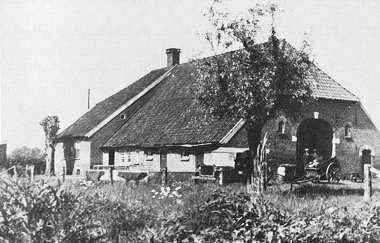
To the east C Company under Lt. John Dunlop was not having such an easy time. Once over the canal Dunlop’s men had dug in around some farm houses, and were meeting a heavy German counter-attack from the north. By late evening the company was in a desperate situation, surrounded on all sides by Germans. Most of the company had taken refuge in a small farm house and a larger barn-like structure. Their only choice was to call artillery fire in on their own position. The strategy worked. The Germans, being outside the structures, absorbed the brunt of the artillery.
Two hours later reinforcements were ordered to C Company and help consolidate their position. By dawn on the 4th of April the battle was over. The regiment now moved in the town of Delden itself, which would become it’s base of operations for the next 3 days.
The German Army was now on the run, and Loren and the Lincoln and Welland Regiment were part of the Canadian Army which was chasing them.
